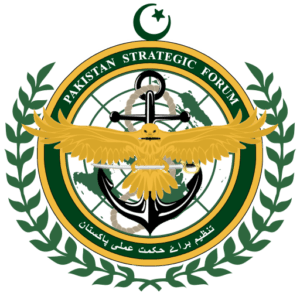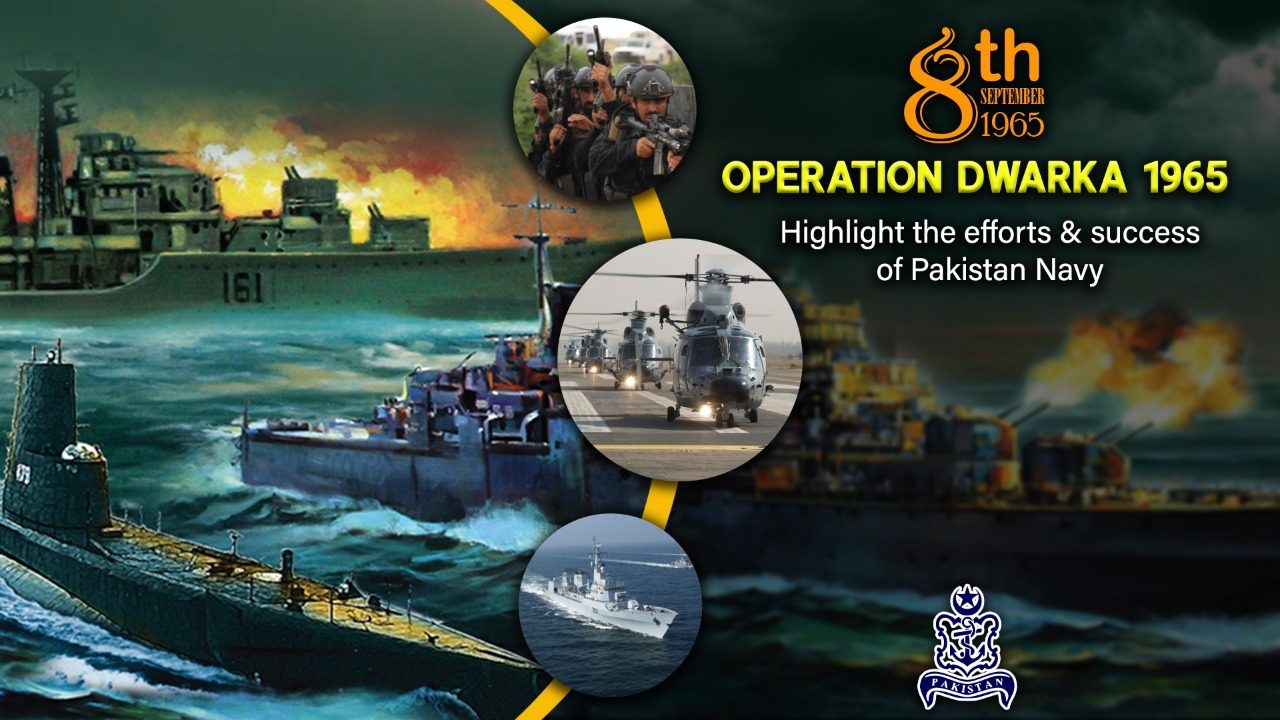The 1965 war is remembered as the days when hero’s rose, displaying acts of courage and valor by successfully defending the homeland from Indian aggression. It was a time when all Tri Forces of Pakistan armed forces stood together facing off an enemy many times its size, however by the nature of that war fighting mostly occurred on land terrain. Hence, the Navy had limited opportunities for deep involvement however despite that played may vital roles that brought the traditionally known as Silent Service (Pakistan Navy) into the spotlight.
At the breakout of the war Pakistan Navy had taken up set objectives revolving around defense, particularly guarding Pakistan’s harbors, maritime activity, shipping lines and countering any Indian Naval operations that could threaten Pakistan’s vital assets from the sea. In a way, Pakistan Navy was the silent guardian who kept Pakistan in the fight by protecting vital routes in the sea which brought in equipment and resources to be used for the war effort. It is important to realize the significance this played as if the Indian Navy had been successful in any of its plans to severely damage Pakistan’s harbors and threatened maritime shipping, then inflow of vital supplies would have dramatically reduced causing crippling effects upon economy and denying the military much needed assets.
To meet its end goal, initially, the Pakistan Navy had taken a defensive stance however this silent force would later play additional roles holding significant military significance. It was after repeated sorties and raid by IAF from the sea which hindered PAF operations that the Pakistan Navy adopted an offensive stance. Soon after the Pakistan Navy had launched multiple Naval operations taking the fight into enemy waters. In this regard, the Navy deployed PNS Ghazi tasked with stalking Indian naval movements and sending back gathered intelligence reports. It was also tasked with locating and dealing with the threat posed by Indian aircraft carrier INS Vikrant, to this end it continued its hunting operations. The very presence of this submarine had caused concern and hesitancy within Indian leadership to deploy its assets forward which as a side effect had diverted the threat posed by INS Vikrant and many other surface vessels as they had been harbored into Bombay docks. Pakistan navy had then made a complete shift to playing an offensive role.
A notable instance of shift from defense to offense was the swift naval artillery raid in operation Dwarka. On the night of the 8th of September Pakistan naval high command gave the green light to launch a naval bombardment of the coastal radar and other military installations on the coast of Dwarka, Indian state of Gujarat. The attack had three main objectives.
- Prompt the Indian navy so that in response they bring out their carrier group from Bombay, after which PNS Ghazi was already hunting to take INS Vikrant out.
- Indian Airbase in Jamnagar of Gujarat relied on the radar station at Dwarka for launching air raids on Karachi. Hence neutralize the radar station faculties to hamper IAF operations over Karachi and provide relief to PAF in that sector.
- Shifting some focus of the Indian high command towards South and the Arabian Sea, away from the main theater of war.
The naval squadron involved in attacking Dwarka included four destroyers, one frigate, one cruiser, and one submarine. At the end of the day, the attack was a major success where a smaller navy had penetrated the hub of an adversary six times its size, causing significant damage and returned unscathed. The naval attack on the coastal city raised alarm bells for the Indian government as it had created concerns of a possible amphibious landing within the coastal city. Many Indian Army and Airforce personnel were also diverted. Additionally, the attack had caused delays in arrival of merchant ships by 1-2 weeks. In the following days Pakistan Navy kept alert and surveyed Indian activities but not a single Indian navy vessel was seen largely due to restrictions placed upon Indian navy to not venture beyond 200 miles beyond Bombay nor North of the parallel of Porbandar. Indian air force activities had also ceased providing relief for Pakistan Airforce to concentrate its assets in the North. Pakistan Navy at that point had achieved the main goals of protecting the nations harbor and maritime activities but the silent service was not done yet.
During the war, Pakistan Navy also vigilantly conducted regular patrols of its territorial waters and surrounding area. During these patrols the Navy seized large amounts of enemy cargo while included contraband goods and barges. Various vessels including big merchant ships were nabbed, and disposal of enemy property and treatment of captured personnel was done according to the international law. All in all, the Navy had undoubtedly played a big role in 1965 war by keeping maritime interests secure, the flow of needed war materials going, diverting attention and assets of Indian armed forces to the south and interfering in Indian maritime activities. This had proven the worth and significance of the Navy, something that is well recognized today as Navy is undergoing a massive modernization drive. Pakistan Navy is fully adapting itself to the new realities and prepared to shoulder the massive responsibilities entrusted upon it by the nation.
#BlitzFalcon
#Panzerjager
#Zarrar
#TeamPakistanStrategicForum







